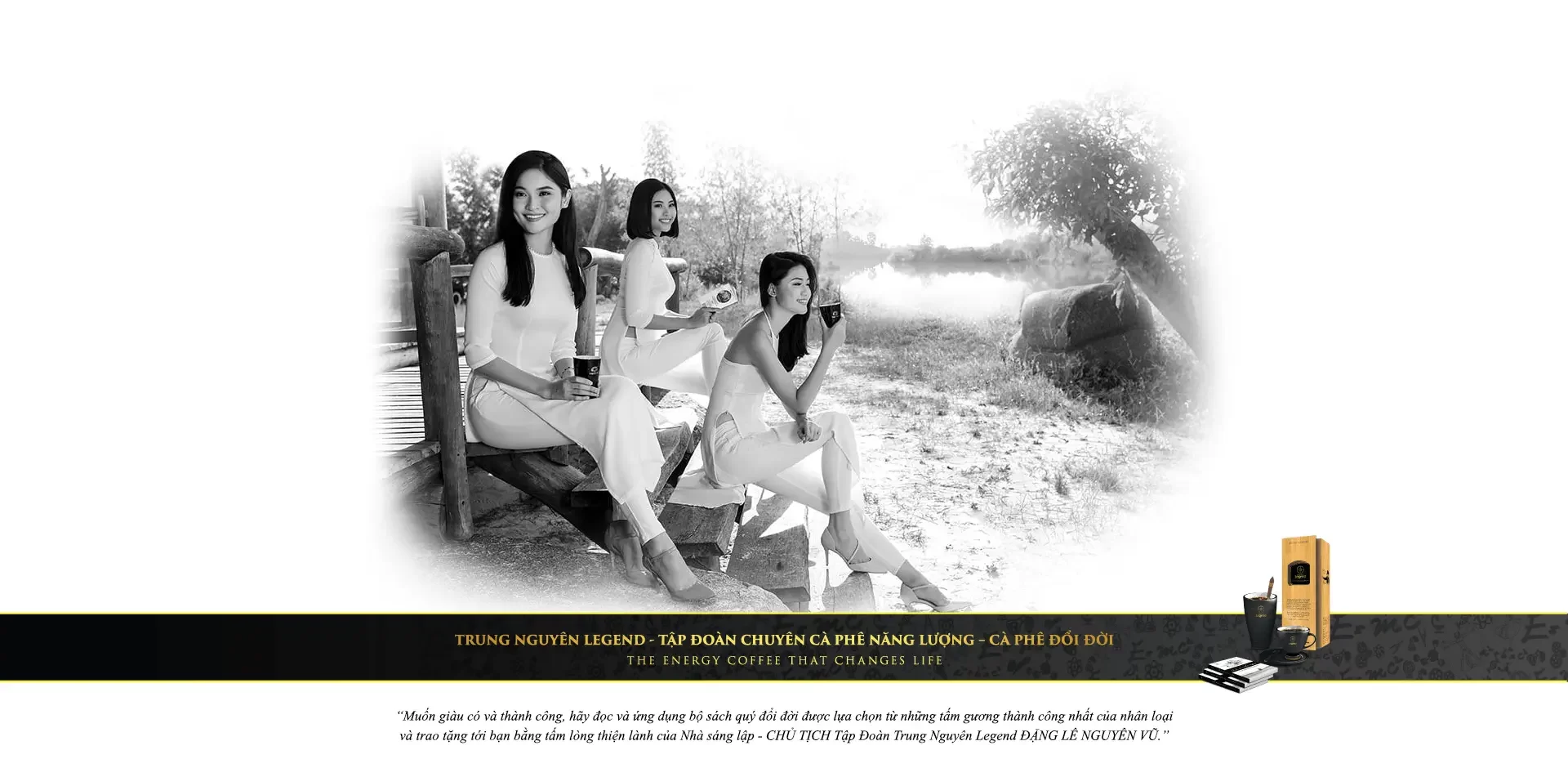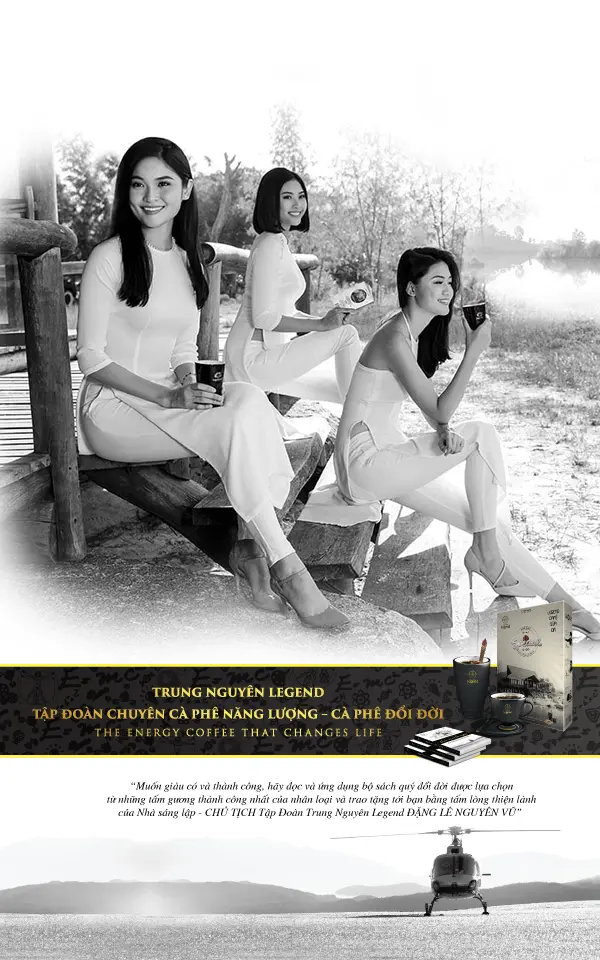Goliath No Match For Vu In Battle For Vietnam Coffee Drinkers
A valuable lesson for companies wishing to expand their business into Southeast Asia ahead of the introduction of the Asian Economic Community (AEC) coming into effect at the end of this year is the battle for supremacy of the Vietnam coffee consumption market between US giant Starbucks and local entrepreneur Trung Nguyen (Central Highlands) coffee.
To most Westerners such a battle would on the surface appear to be somewhat one sided. A giant, globally established brand that has become so ubiquitous with the word coffee that it is often used as a replacement for the name of the beverage itself versus a much smaller, locally known identity.

Traditional Vietnamese single-cup coffee filters brewing Photo courtesy Wikimedia user Dragfyre
However, in Vietnam, which only started opening to the West during the Doi Moi (Renovation) period commencing in 1986, allegiances to home-grown brands and locally developed products is strong, especially when it comes to something as sacred as coffee.
The world’s largest grower of robusta coffee beans and the second largest coffee exporter globally behind Brazil, in 2014 Vietnam coffee export volumes reached 1.7 million tons; a year on year increase of 30.1 per cent in volume, while export value increased 30.9 per cent year on year to more than US$3.56 billion dollars. An increase of more than $840 million over the year prior.
The good news is that Vietnam doesn’t export all of its best coffee. Coffee shops, stalls and tea houses are as common as the unique cyclos (cycle rickshaw) that ply the nations streets, while the country’s citizens are drinking the beverage in ever increasing quantities.

In 2014 Vietnamese coffee drinkers consumed more than 1,600 bags (96,000kg/ 211,643lbs) of locally grown coffee in an industry that has recorded a compounding average growth rate in excess of 13 per cent per year since 2000.
Riding the crest of the growth in Vietnam coffee drinkers is Trung Nguyen coffee, established in 1996 by Dang Le Nguyen Vu, who decided a medical career was not for him.
After obtaining a medical degree Mr Vu set about promoting the high quality coffee grown in his local Central Highland’s region of Dak Lak Province, at a time when the word “entrepreneur” was most commonly applied to Silicon Valley tech startups.
The combination of Vietnam being home to some of the finest robusta coffee in the world; the trust of growers; entrepreneur spirit; and the increasing Vietnamese’ love for the beverage has been a perfect match.
From one bicycle in 1996 the plucky Vietnamese entrepreneur opened his first coffee lounge in 1998 with more than 80 stores now spread nationwide. In addition Trung Nguyen coffee is sold in more than 1,000 outlets throughout Vietnam. By comparison Starbucks has more than 18,000 stores operating in 60 countries.
Franchises have also opened in Japan, Thailand, Cambodia, Malaysia, Singapore, and China, while the first outlets outside of Asia opened in Germany and New York City in 2006. The company’s coffee is also exported to more than 60 countries with its instant coffee product, G7, proving particularly appealing to Chinese consumers.

In 2014 Forbes put Trung Nguyen (Central Highlands) coffee founder Dang Le Nguyen Vu’s personal wealth at more than $100 million. Photo: Daniel Schearf/ VOA
The rapid expansion and reputation for a quality product has propelled Mr Vu to millionaire status with Forbes in 2014 putting his personal worth at more than $100 million, while his penchant for expensive cars – he owns no less than ten Ferraris and five Bentleys plus a stable of 120 horses at his Central Highlands retreat – is widely known.
The upmarket settings that characterise Trung Nguyen coffee shops seem to have struck a chord with Vietnam coffee drinkers too. A 2012 market research study found out of 17 million Vietnam coffee drinkers more than 11 million (64.71 per cent) had purchased Trung Nguyen coffee.
With business churning along nicely, the decision by Starbucks to enter into the Vietnam coffee consumption market in 2013 was a challenge. Mr Vũ accepted it with relish, announcing at the time that he would launch his own assault on the Seattle-based coffee company’s dominance of the US coffee consumption market.
Not mincing words, Mr Vũ told Bloomberg he would take the Trung Nguyen name to the US, buy coffee bean roasters there and open stores in Seattle, Boston and New York. “We must be able to surpass Starbucks. We must offer something more attractive for US consumers.”
“US customers should be able to enjoy cups of authentic coffee, their level of coffee appreciation is probably not high yet, but we’ll work on that”, he was quoted as saying.
True to his word Mr Vũ took the iconic Vietnam brand to the USA, however, just as Starbucks found taking on a dominant local player to be akin to entering the lion’s den, so to has Trung Nguyen coffee found taking the battle for coffee market supremacy to the door of Starbucks to also be more difficult than expected.
When it opened its first store in Ho Chi Minh City (HCMC) in early 2013 Starbucks’ president for China and Asia Pacific region, John Culver, proclaimed: “We will aggressively grow in Vietnam”. Two years later and Starbucks’ share of the Vietnam coffee drinkers’ market sees it with just a dozen stores, while Trung Nguyen continues to grow.
By comparison in neighbouring Thailand) the company has some 198 retail locations, while in Malaysia where it has been established for 16 years it has about 190 stores, while Starbucks Coffee Indonesia operates with more than 147 outlets.
The Secret Ingredient: Kopi Luwak
An added feather in the cap of Trung Nguyen is its development of a synthetic civet coffee, commonly known as Kopi Luwak
Renowned for its rich mellow and chocolaty taste, civet coffee, or cà phê chồn as it is known in Vietnam, is made from coffee cherries that have passed through the intestinal tract of nocturnal carnivorous mammals known as civets, which are native to Africa and Asia. It is the most expensive of all coffee available with $50 or more per cup the going price.

Trung Nguyen’s G7 instant coffee has proven particularly appealing to Chinese coffee drinkers. Photo: Dragfyre
Working with a team of European scientists who isolated and then duplicated six specific natural enzymes that alter the composition of the coffee beans after being digested by civets, the company’s Legendee synthetic civet coffee has gained favour due to its lower price than natural civet coffee and its distinctive, mellow chocolaty flavour.
While the not so “little David’s” attempt to carve a chunk out of the US retail coffee consuming market has progressed slower than planned (possibly because the name “Trung Nguyen” does not roll off the tongue as easily as “Starbucks”) , Mr Vu said he still aims to build a global “coffee empire” within the next 10 years.
While the company remains secretive about its revenue it has been reported that in 2012 sales topped $200 million and sales are expected to exceed $1 billion by the end of 2016 if historic growth of 37 per cent per year is maintained.
Now employing more than 3,000 people and five processing facilities, Mr Vu said his aim was to have 200 stores open by the end of this year. He also plans to float the company on an international stock exchange to fund a global “coffee empire” within the next 10 years, though no timetable for a public issue has yet been set.
Source: Sandra Ani / The establishment Post / Link: Goliath No Match For Vu In Battle For Vietnam Coffee Drinkers


